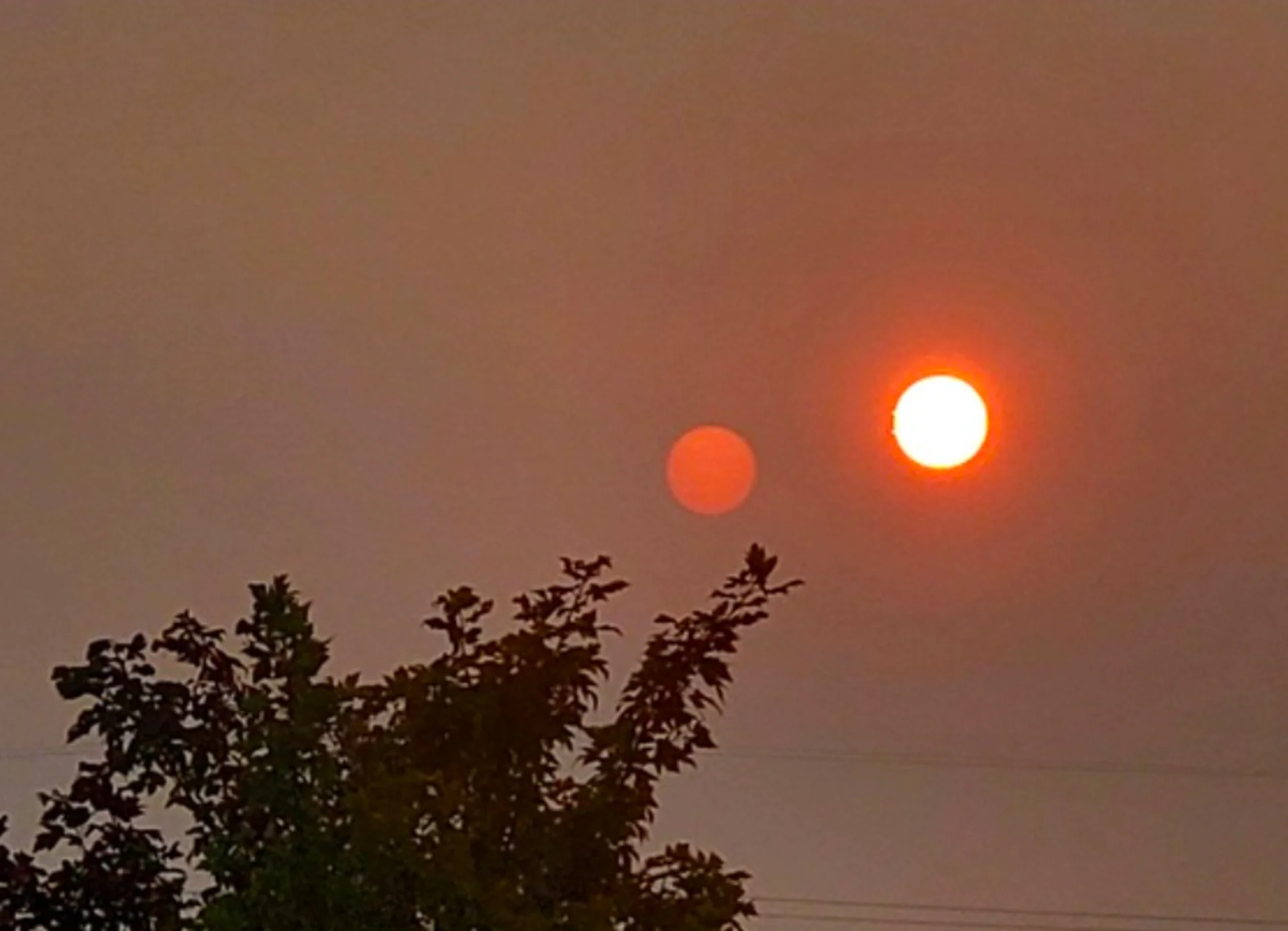
Smoke over this Canadian city equivalent to smoking 40 cigarettes
Parts of B.C. have seen several days with dangerous air quality conditions due to wildfire smoke streaming in from California, Oregon, and several other Western states.
Smoke from the historic wildfires on the U.S. West Coast has now pushed across every single Canadian province. The provinces in eastern Canada are enjoying beautiful sunsets, while Western Canada is struggling through an unhealthy amount of smoke that is degrading surface air quality to hazardous levels.
Victoria, B.C. has been one of Canada's smokiest locations over the past week since the calm marine layer is acting as the perfect conduit to hold the smoke in the lowest levels of the atmosphere.
Ed Wiebe, a climate scientist in Victoria, did some creative calculations to determine the amount of smoke hovering over Victoria.
RELATED: 10 tips for coping with wildfire smoke, from a public health expert
WATCH BELOW: CANADIANS FACE MAJOR HEALTH RISKS DUE TO WILDFIRES
Hypothetically, if you plopped a circle with a surface area of 140 squared kilometres over the provincial capital and extended the cylinder two kilometres into the atmosphere, how much would the smoke particles inside the cylinder weigh?
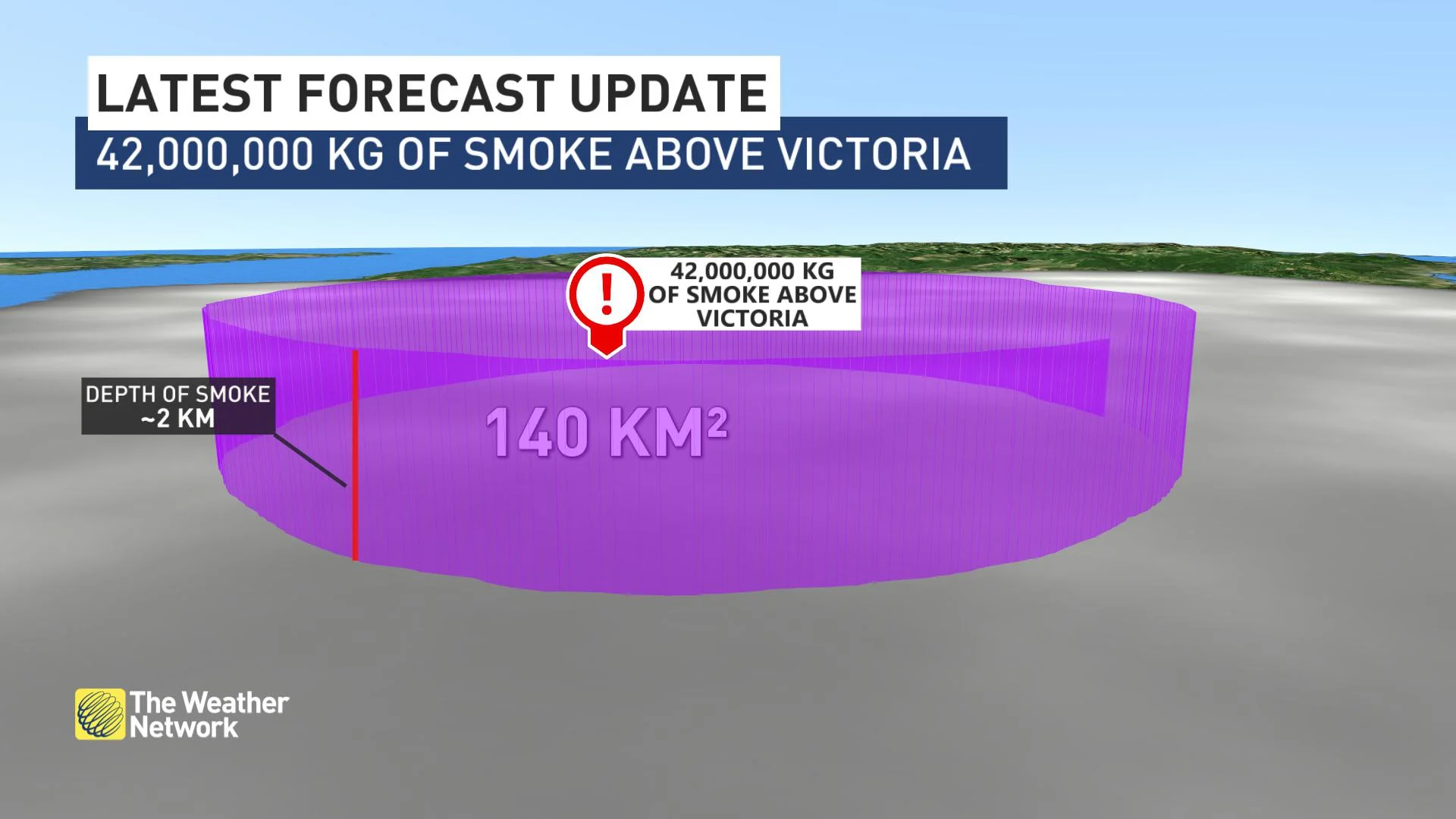
It's estimated that 42,000 tonnes of fine-particulate matter are meandering in the air around Victoria during this latest smoke outbreak.
Often, it's tough to conceptualize how much area has been destroyed by wildfire. To date, 1.6 million hectares have burned, which is equivalent to the length that extends from Niagara Falls out to Peterborough.
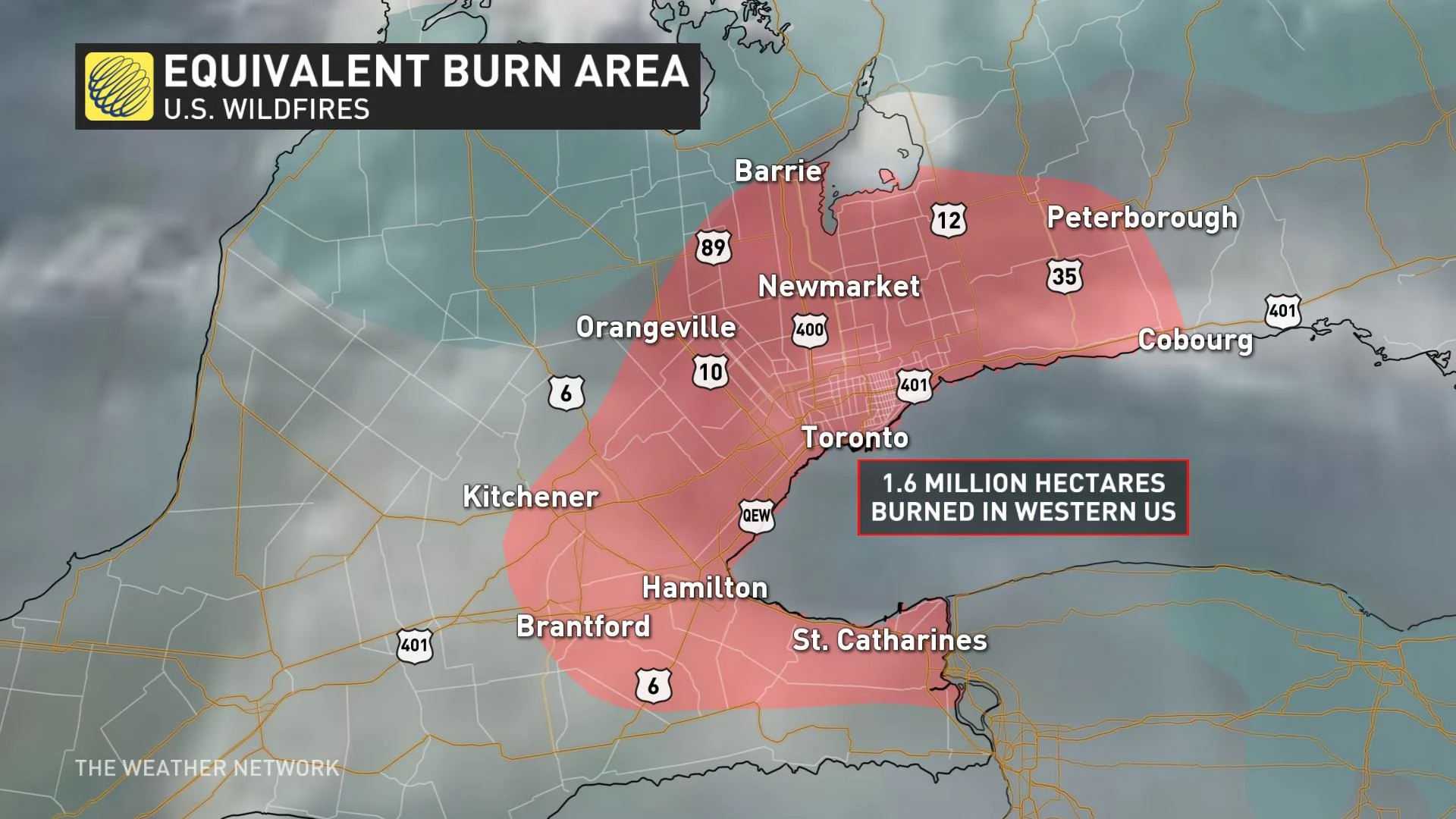
The atrocious air quality that is plaguing several cities in B.C. cities has been unrelenting. Looking at the recent levels of air pollution, it's the equivalent of smoking over 40 cigarettes during the past week.
Thankfully, the air quality readings dropped on Wednesday for the City of Victoria, meaning that the air quality is equivalent to just over four cigarettes a day now.
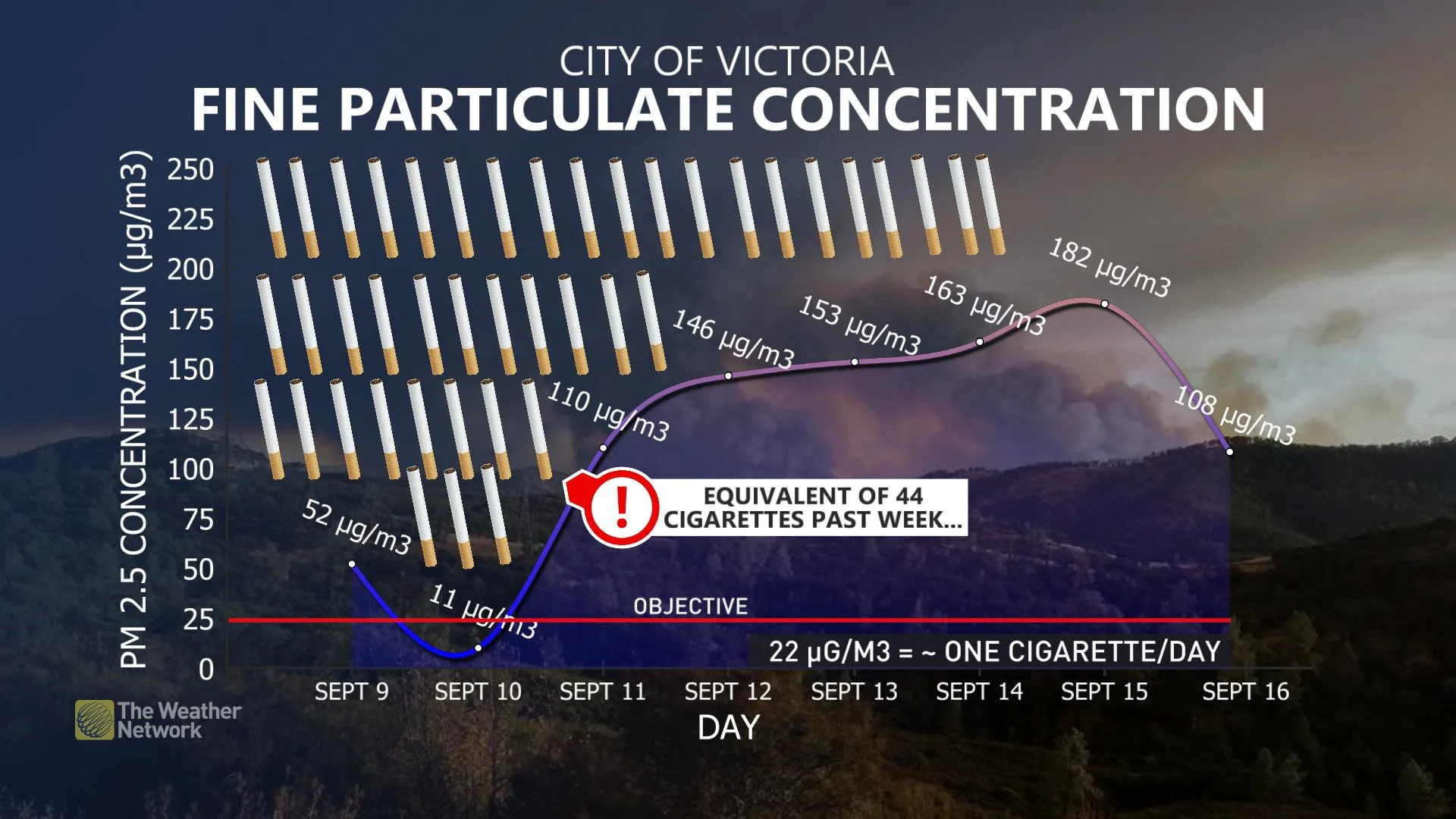
What if, suddenly, all that smoke trapped around Victoria fell to the surface?
First off, ash is super dense. We're talking at least 180 kilograms per cubic metre, up to 620 kilograms per cubic metre. While making some assumptions, the soot would cover the entire circled area with a layer of ash that would be 1.5 mm thick.
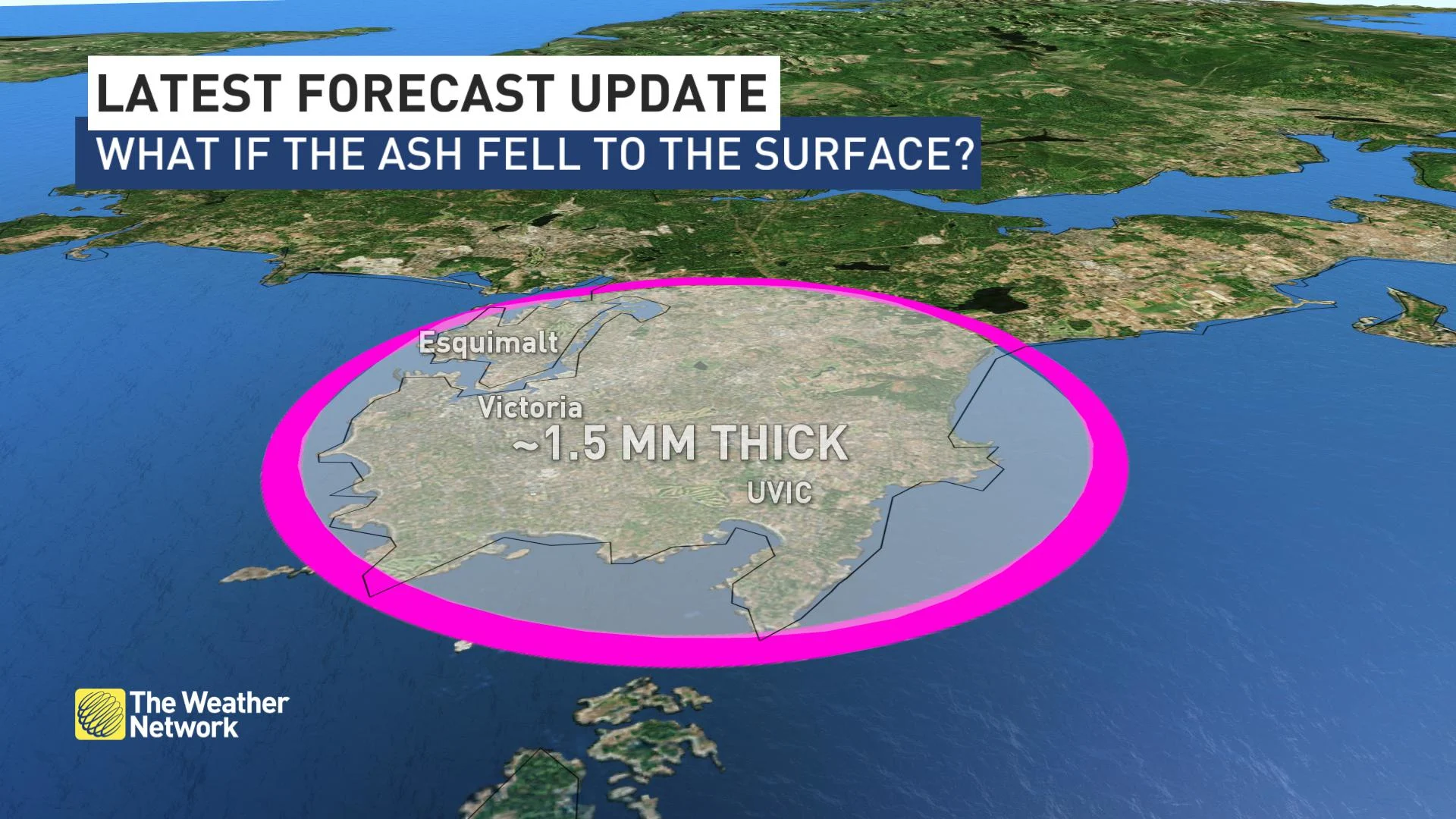
So how small are the PM 2.5 particles contained in wildfire smoke? Well, for starters, thirty times smaller than the width of a human hair.
Particles of this size are transported long-distances far from the source of emissions. Because of their small size, they can travel deep into the respiratory tract, reaching the lungs with ease.
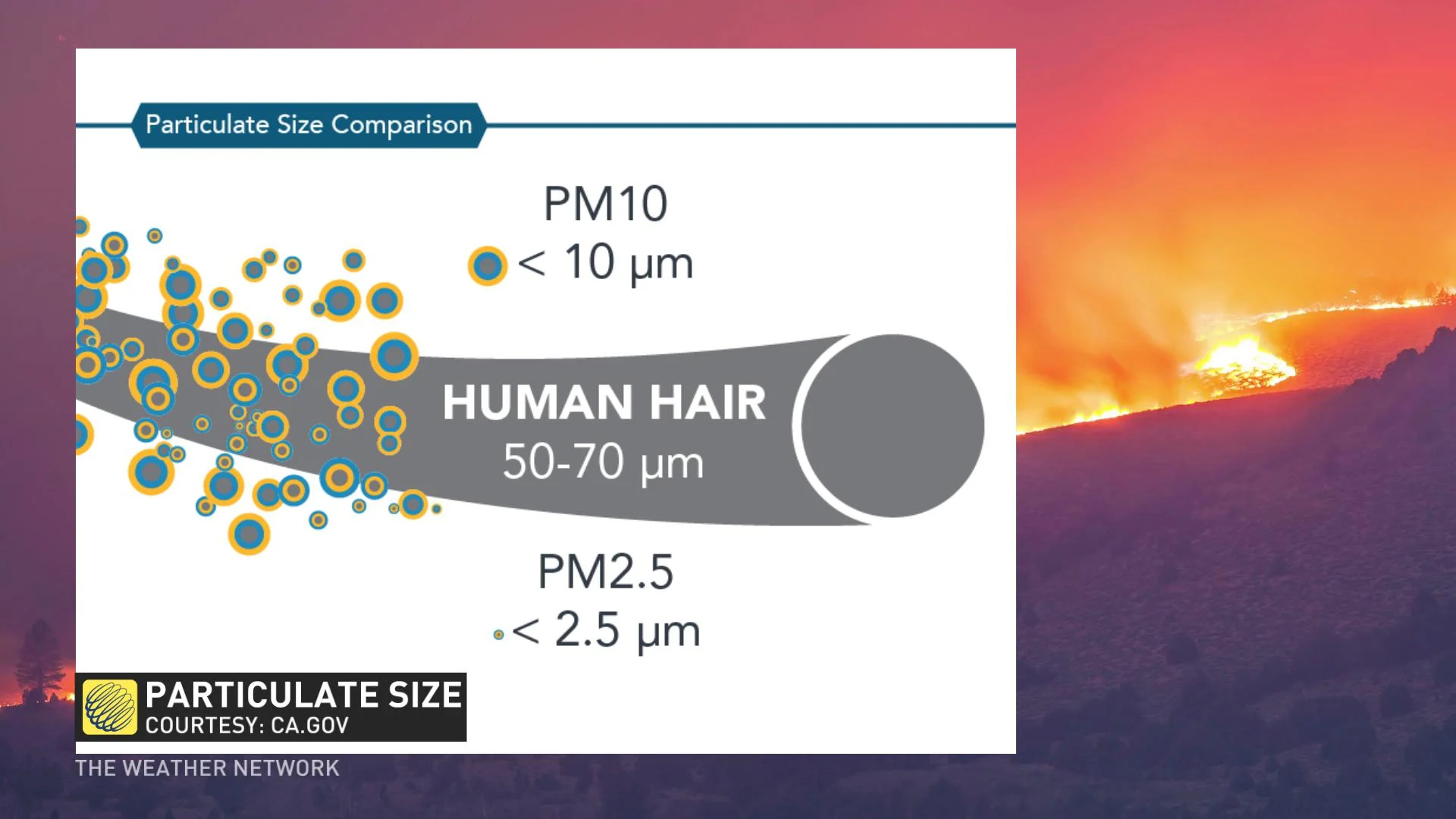
PM 2.5 can easily penetrate indoors because of its small size and government officials say that extra precautions are necessary when wildfire smoke lingers in the air.
Staying indoors is always advantageous to reduce exposure, and of course, avoiding strenuous activity is advised. The average human takes in 700 litres of air per hour. That number expands to a staggering 6000 litres of air with vigorous exercise.
“Exposure to PM 2.5 is particularly a concern for people with underlying conditions such as lung disease, heart disease, chronic obstructive pulmonary disease (COPD), asthma, and/or diabetes, individuals with respiratory infections such as COVID-19, pregnant women and infants, children, and older adults. Individuals who are socially marginalized may also be at elevated risk,” states Environment Canada.
Thumbnail courtesy: Samyem Tuladhar










